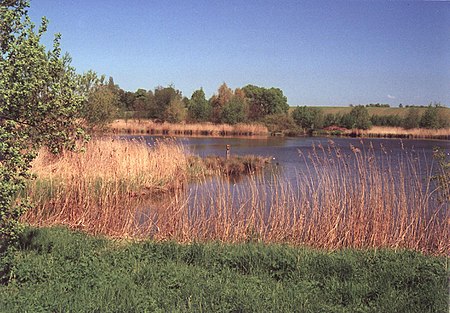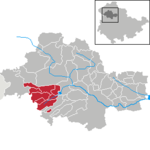Opfermoor Vogtei

The Opfermoor Vogtei is an open-air museum at the location of a prehistoric and protohistoric sacrificial bog (German: Opfermoor) in the municipality of Vogtei, Thuringia, in Germany. It lies within the former municipality of Oberdorla, approximately 200 metres (220 yd) from Niederdorla, and the site is also known by those names. The site, which includes a shallow lake, was a supra-regional cult site from the Hallstatt Period (6th century BCE) to the Migration Age (5th century CE) developed by people whose descendants became, in Friedrich Maurer's nomenclature, the Rhine-Weser Group of Germanic people. It is the largest known Iron Age cult site in Central Europe and has yielded important information about pre-Germanic and Germanic religious practices. Excavations took place there between 1957 and 1964, and recovered artifacts and reconstructions of shrines are presented in an open-air museum on the site, which includes a reconstructed village, and an associated museum in Niederdorla.
Excerpt from the Wikipedia article Opfermoor Vogtei (License: CC BY-SA 3.0, Authors, Images).Opfermoor Vogtei
Straße zum Mittelpunkt Deutschlands, Vogtei
Geographical coordinates (GPS) Address External links Nearby Places Show on map
Geographical coordinates (GPS)
| Latitude | Longitude |
|---|---|
| N 51.165277777778 ° | E 10.445277777778 ° |
Address
Opfermoor
Straße zum Mittelpunkt Deutschlands
99986 Vogtei (Oberdorla)
Thuringia, Germany
Open on Google Maps










